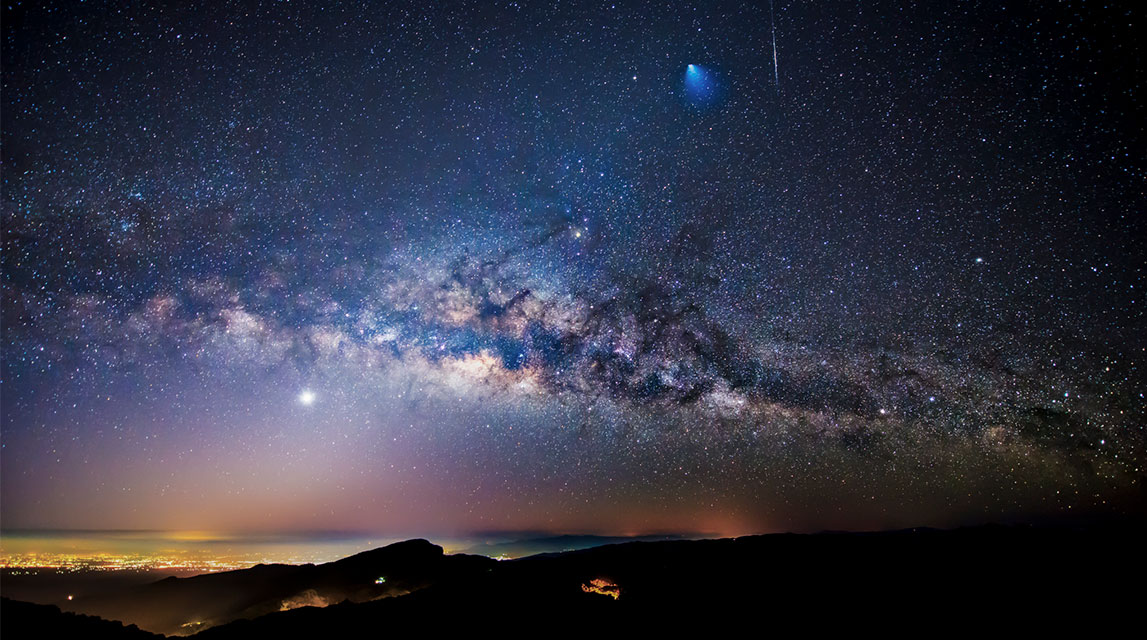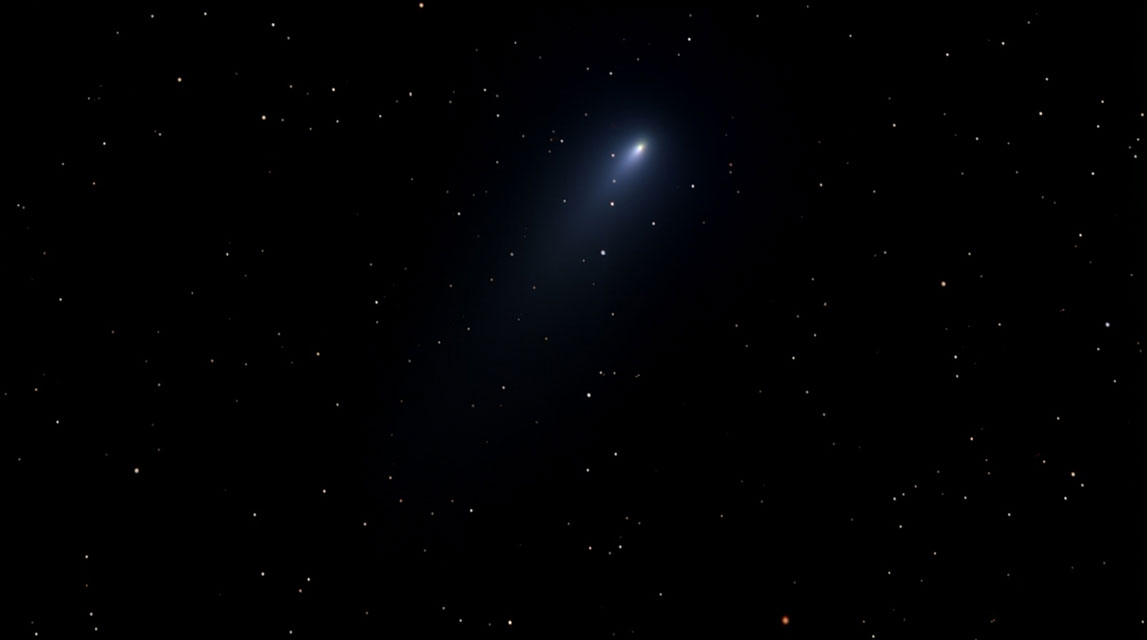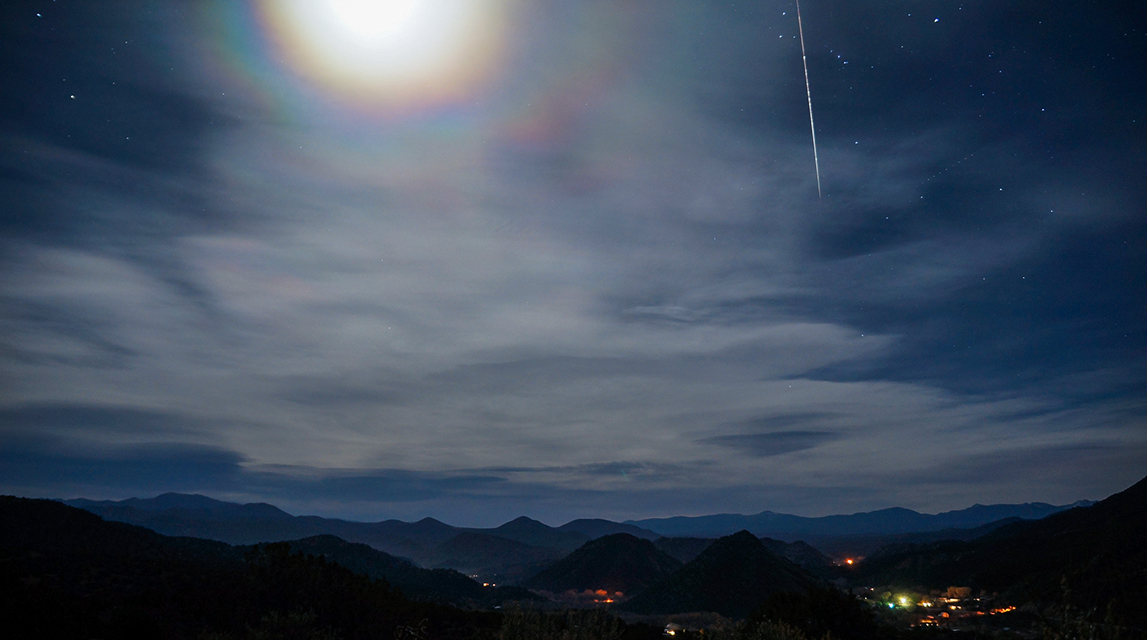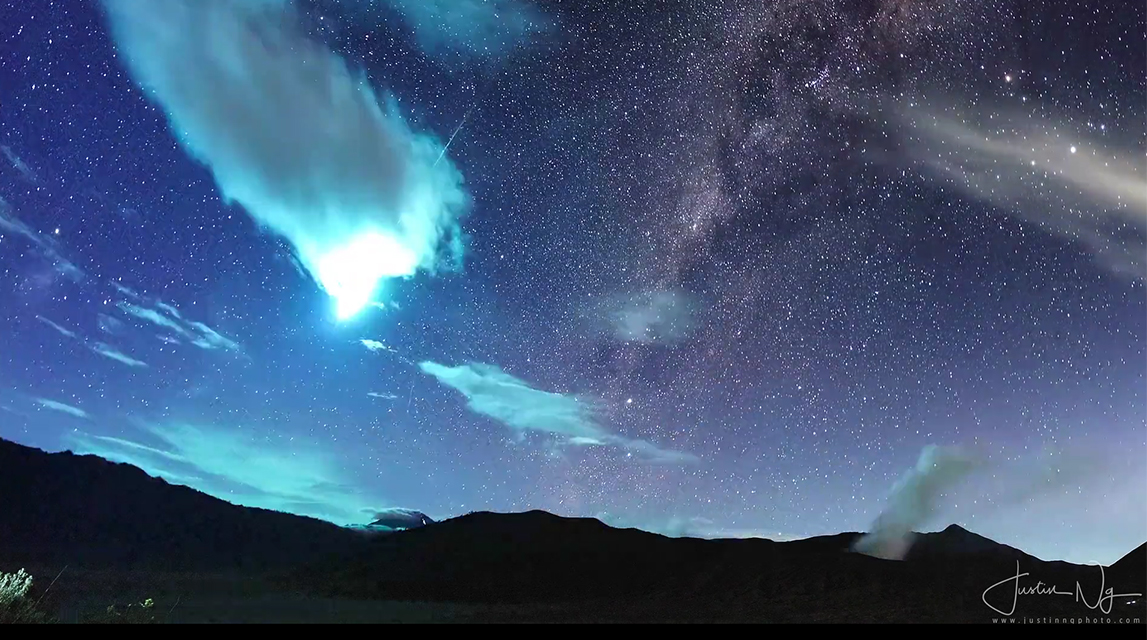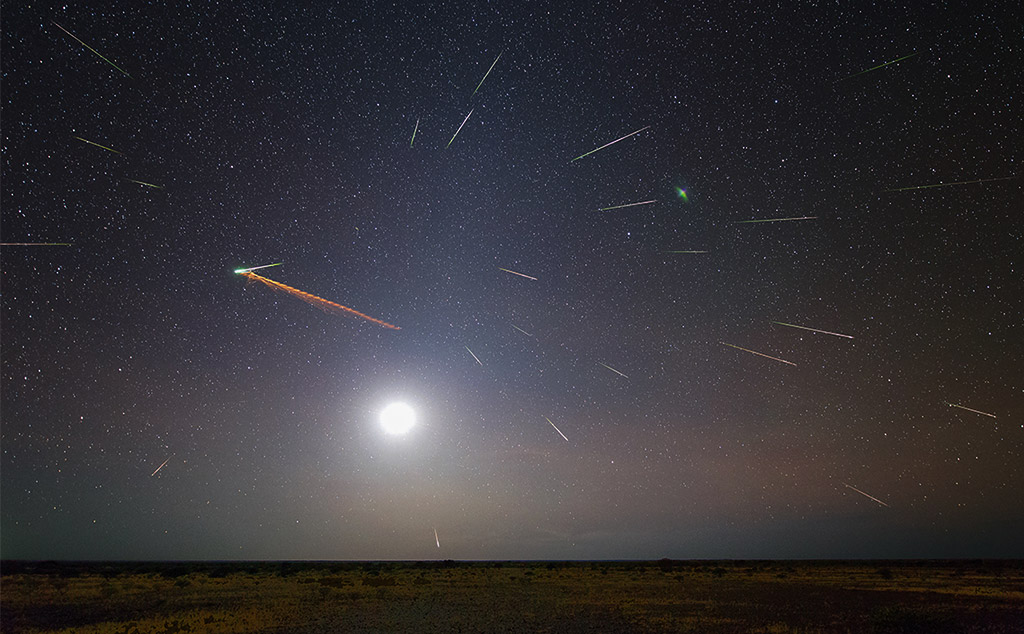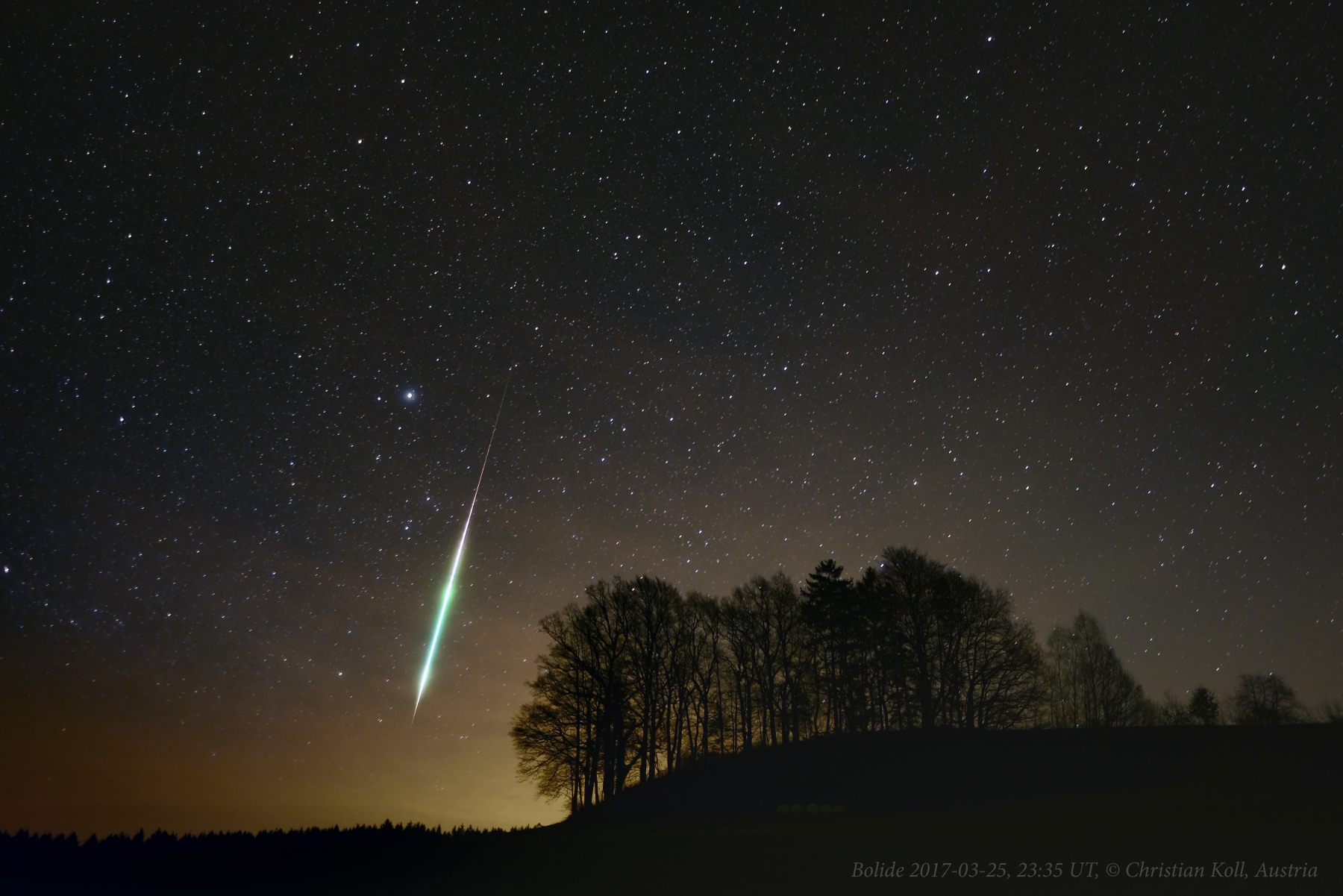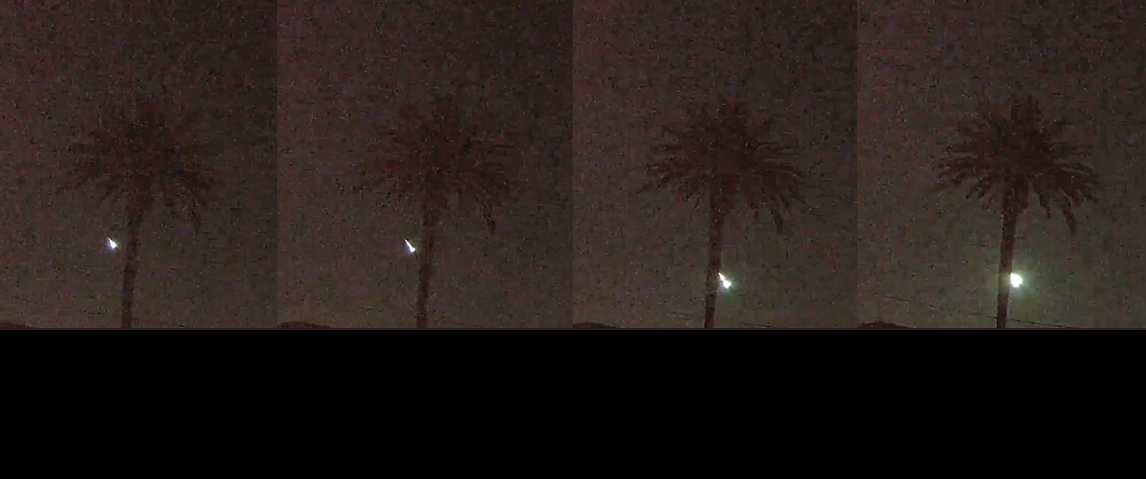
Meteor Activity Outlook for June 10-16, 2017
During this period the moon's phase will wane from full down to nearly half illuminated. This will be the worst week of the month to try and view meteor activity as the bright moon remain above the horizon nearly all night long and will obscure all but the brighter meteors.
 American Meteor Society
American Meteor Society

